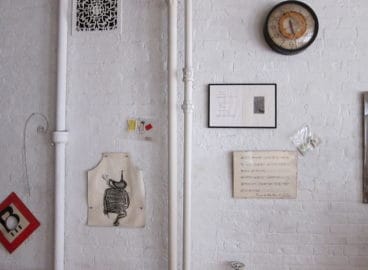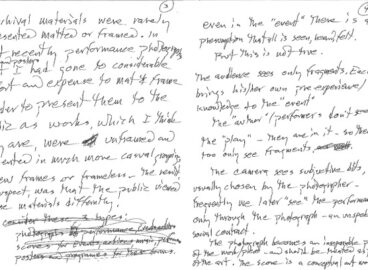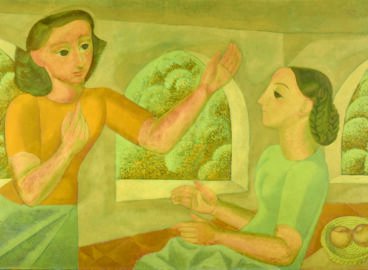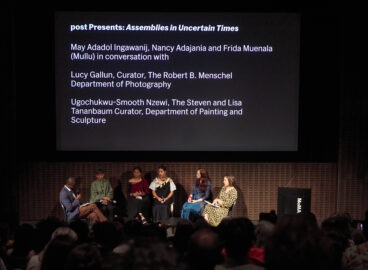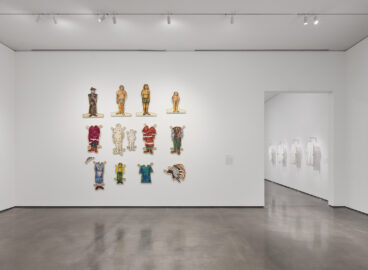“Poetry is a good way to restate the beautiful moments of our lives.” —Augusto de Campos (2012)
As Hurricane Sandy struck in October 2012, legendary Brazilian poet and founder of the Concrete Poetry movement Augusto de Campos and his son, the musician Cid Campos, were holed up in a Manhattan hotel. As part of the MoMA series Modern Poets, the pair were due to present an intermedia performance integrating word, music, and image, what they call a “verbivocovisual” presentation aiming to be “free of the strictures of logical discourse.” The allusion to danger in the title of the performance, Poetry Is Risk, seemed apt given the circumstances, but it has an alternative meaning in Portuguese: risco can also mean “score” or “scratch out”—in other words, to make a mark.
The performance was postponed until the following day, and as New York reeled from the devastating effects of the storm, an impressive crowd gathered for a magical and restorative night of visual poetry spanning the career of one of the genre’s greatest innovators. Throughout Campos’s long career working within the expanded territory of poetry, he has used sound and image to activate associative thinking and explore the possibilities of language.
The poet dealt sensitively with the issue of translation, a process he refers to as re-criação (re-creation), by carefully overlaying his spoken English performance with gentle melodies provided by Cid Campos in the original Portuguese and projections of his poems. Aged 83, he also stunned the audience with a one-breath reading of his poem “cidade/city/cité” and a bossa nova rendition of “Our Share of the Night to Bear,” a “lyrical jewel” by Emily Dickinson.
Augusto de Campos and Cid Campos. Performance: Poetry Is Risk (Introduction). 2012. The Museum of Modern Art, New York
